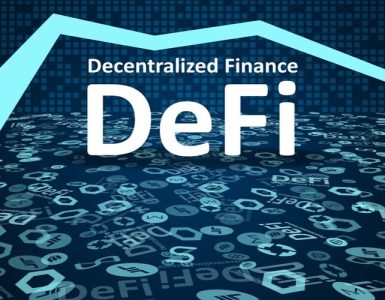DeFi, short for decentralized finance, has emerged as a revolutionary concept in the world of finance. It leverages blockchain technology to create a decentralized ecosystem that eliminates intermediaries and allows for peer-to-peer transactions. One of the key components of DeFi is liquidity mining and yield farming, which play a crucial role in the growth and sustainability of decentralized finance protocols.
Introduction
DeFi refers to a wide range of financial applications and services that operate on decentralized networks, primarily based on blockchain technology. Unlike traditional finance, which relies on centralized institutions, DeFi aims to create an open and transparent financial system that is accessible to anyone with an internet connection.
What is Liquidity Mining?
Liquidity mining, also known as yield mining or liquidity provision, is a process through which users provide liquidity to decentralized exchanges (DEXs) and other DeFi protocols in exchange for rewards. By supplying tokens to these platforms, users contribute to the liquidity pool, facilitating smooth and efficient trading.
How does Liquidity Mining Work?
In liquidity mining, users lock their funds in smart contracts that power the DeFi protocols. These funds are used to provide liquidity for trading activities. In return, users receive rewards in the form of additional tokens, which are often native to the protocol they are participating in.
Benefits of Liquidity Mining
Liquidity mining offers several benefits to participants. Firstly, it allows users to earn passive income by supplying liquidity to decentralized exchanges. The rewards received can be substantial, especially in the early stages of a project when incentives are higher. Additionally, liquidity mining also helps bootstrap liquidity for new tokens and projects, fostering their growth and adoption.
Risks and Challenges of Liquidity Mining
Despite its potential rewards, liquidity mining also carries certain risks and challenges. One of the primary risks is impermanent loss, which occurs when the value of the deposited assets fluctuates significantly. Additionally, there is the risk of smart contract vulnerabilities, hacks, and market volatility, which can impact the value of the supplied assets.
What is Yield Farming?
Yield farming is a strategy that allows users to maximize their returns by moving their funds between different DeFi protocols to take advantage of the most attractive yields. It involves lending or staking assets to generate additional income in the form of interest, fees, or token rewards.
How does Yield Farming Work?
In yield farming, users lock their assets in specific protocols that offer attractive rewards. These rewards can come in the form of interest generated by lending assets or fees earned from providing liquidity to decentralized exchanges. Additionally, yield farming often involves receiving additional tokens as incentives, similar to liquidity mining.
Different Types of Yield Farming Strategies
There are various yield farming strategies available, each with its own risk and reward profile. Some common strategies include staking assets in liquidity pools, providing collateral for lending platforms, and participating in decentralized governance to earn governance tokens.
Benefits of Yield Farming
Yield farming provides an opportunity for users to earn higher returns on their assets compared to traditional financial instruments. By actively managing their funds and strategically allocating them to protocols offering attractive yields, participants can generate additional income and potentially compound their earnings over time.
Risks and Challenges of Yield Farming
Yield farming carries certain risks that users need to be aware of. These include smart contract vulnerabilities, platform hacks, and impermanent loss. Additionally, yield farming requires active management and monitoring of the market to identify the most profitable opportunities, which can be time-consuming and demanding.

Liquidity Mining vs. Yield Farming
While liquidity mining and yield farming share some similarities, there are also notable differences between the two concepts.
Similarities between Liquidity Mining and Yield Farming
- Both liquidity mining and yield farming involve participants providing their assets to decentralized protocols in exchange for rewards.
- Both mechanisms incentivize users to contribute to the liquidity of decentralized exchanges and other DeFi platforms.
- Liquidity mining and yield farming offer opportunities for users to earn passive income by actively participating in the DeFi ecosystem.
- Both strategies have gained popularity due to the potential for high returns and the ability to actively engage in the growth of the DeFi space.
- Participants in both liquidity mining and yield farming can earn additional tokens as rewards, which can have potential value appreciation.
- Liquidity mining and yield farming encourage broader token distribution and promote decentralized ownership.
- Both mechanisms help bootstrap liquidity for new tokens and projects, fostering their growth and adoption.
- Users engaging in liquidity mining and yield farming contribute to price stability and market efficiency by providing ample liquidity for trading activities.
- Both strategies require participants to carefully assess the risks involved, conduct research, and make informed decisions.
- Liquidity mining and yield farming have become integral components of the DeFi ecosystem, driving innovation and financial inclusivity.
Differences between Liquidity Mining and Yield Farming
The key difference between liquidity mining and yield farming lies in the underlying mechanism and the way rewards are generated. Liquidity mining primarily focuses on supplying liquidity to decentralized exchanges, while yield farming encompasses a broader range of strategies aimed at maximizing returns by leveraging various DeFi protocols.
The Role of Liquidity Mining and Yield Farming in DeFi
Liquidity mining and yield farming play essential roles in the development and sustainability of the DeFi ecosystem. Some of the key roles they perform include:
Providing Liquidity to Decentralized Exchanges
Liquidity mining and yield farming incentivize users to provide liquidity to decentralized exchanges. By offering rewards, protocols can attract liquidity providers and ensure there is sufficient depth in the order books. This, in turn, enhances the trading experience for users and contributes to the overall efficiency of the decentralized exchange.
Incentivizing Participation and Network Growth
By providing rewards, liquidity mining and yield farming encourage users to actively participate in the DeFi ecosystem. This incentivization helps attract new users and fosters network growth, creating a vibrant and thriving community around the protocol. Additionally, by offering incentives in the form of native tokens, projects can distribute their tokens widely, ensuring a more decentralized ownership structure.
Enhancing Token Distribution and Governance
Liquidity mining and yield farming contribute to the fair distribution of tokens and promote decentralized governance. By providing rewards to participants, projects can distribute tokens to a wide range of users, reducing concentration and promoting a more equitable distribution of ownership. Additionally, by encouraging participation in decentralized governance, liquidity mining and yield farming empower token holders to actively contribute to the decision-making process of the protocol.
Facilitating Price Stability and Market Efficiency
Liquidity mining and yield farming help improve price stability and market efficiency in decentralized exchanges. By incentivizing liquidity provision, these mechanisms ensure that there is sufficient liquidity available for trading activities. This reduces the impact of market manipulation and allows for more accurate price discovery. Additionally, by actively participating in the market, liquidity providers contribute to tighter spreads and lower slippage, enhancing the overall trading experience for users.
Best Practices and Tips for Liquidity Mining and Yield Farming
Participating in liquidity mining and yield farming requires careful consideration and adherence to best practices. Some tips to keep in mind include:
Research and Due Diligence
Before participating in any liquidity mining or yield farming opportunity, it is crucial to conduct thorough research and due diligence. Understand the underlying protocols, assess the risks involved, and evaluate the long-term potential of the project. Look for audits, reviews, and community feedback to gain a comprehensive understanding of the risks and rewards.
Diversification and Risk Management
Diversification is key when participating in liquidity mining and yield farming. Spread your funds across multiple protocols to minimize the impact of any potential vulnerabilities or market fluctuations. Additionally, manage your risk exposure by allocating an appropriate portion of your portfolio to these strategies, considering your risk tolerance and investment objectives.
Understanding the Underlying Protocols
To effectively participate in liquidity mining and yield farming, it is essential to understand the mechanics of the underlying protocols. Familiarize yourself with the smart contracts, token economics, and any governance mechanisms in place. This knowledge will help you make informed decisions and navigate the ever-evolving DeFi landscape.
Staying Informed and Adapting to Changes
The DeFi space is dynamic and rapidly evolving. Stay updated with the latest developments, news, and protocol updates. Follow reputable sources, participate in community discussions, and engage with other users to gain insights and adapt your strategies accordingly. Being proactive and flexible will enable you to capitalize on emerging opportunities and mitigate potential risks.
Conclusion
Liquidity mining and yield farming are integral components of the DeFi ecosystem, driving liquidity, participation, and growth. By providing incentives for users to contribute to decentralized exchanges and other protocols, these mechanisms play a crucial role in shaping the future of finance. However, it is important to approach liquidity mining and yield farming with caution, conducting thorough research and understanding the risks involved. With proper knowledge and risk management, participants can benefit from the opportunities presented by these innovative strategies.
FAQs
1. What is the difference between liquidity mining and yield farming?
Liquidity mining primarily focuses on providing liquidity to decentralized exchanges, while yield farming encompasses a broader range of strategies aimed at maximizing returns by leveraging various DeFi protocols.
2. How can I get started with liquidity mining and yield farming?
To get started, you need to research and identify suitable protocols or platforms that offer liquidity mining or yield farming opportunities. Familiarize yourself with the mechanics of the protocols, assess the risks involved, and make informed decisions based on your risk tolerance and investment objectives.
3. Are there any risks involved in liquidity mining and yield farming?
Yes, liquidity mining and yield farming come with certain risks. These include impermanent loss, smart contract vulnerabilities, market volatility, and platform hacks. It is important to understand and manage these risks before participating.
4. Can I lose money while participating in liquidity mining and yield farming?
Yes, there is a risk of losing money when participating in liquidity mining and yield farming. Market fluctuations, impermanent loss, smart contract vulnerabilities, or protocol failures can result in losses. It is crucial to only invest what you can afford to lose and diversify your portfolio.
5. Are there any tax implications for liquidity mining and yield farming?
Tax regulations vary across jurisdictions, and the tax implications of liquidity mining and yield farming can be complex. Consult with a tax professional to understand the tax obligations and reporting requirements in your specific jurisdiction.




